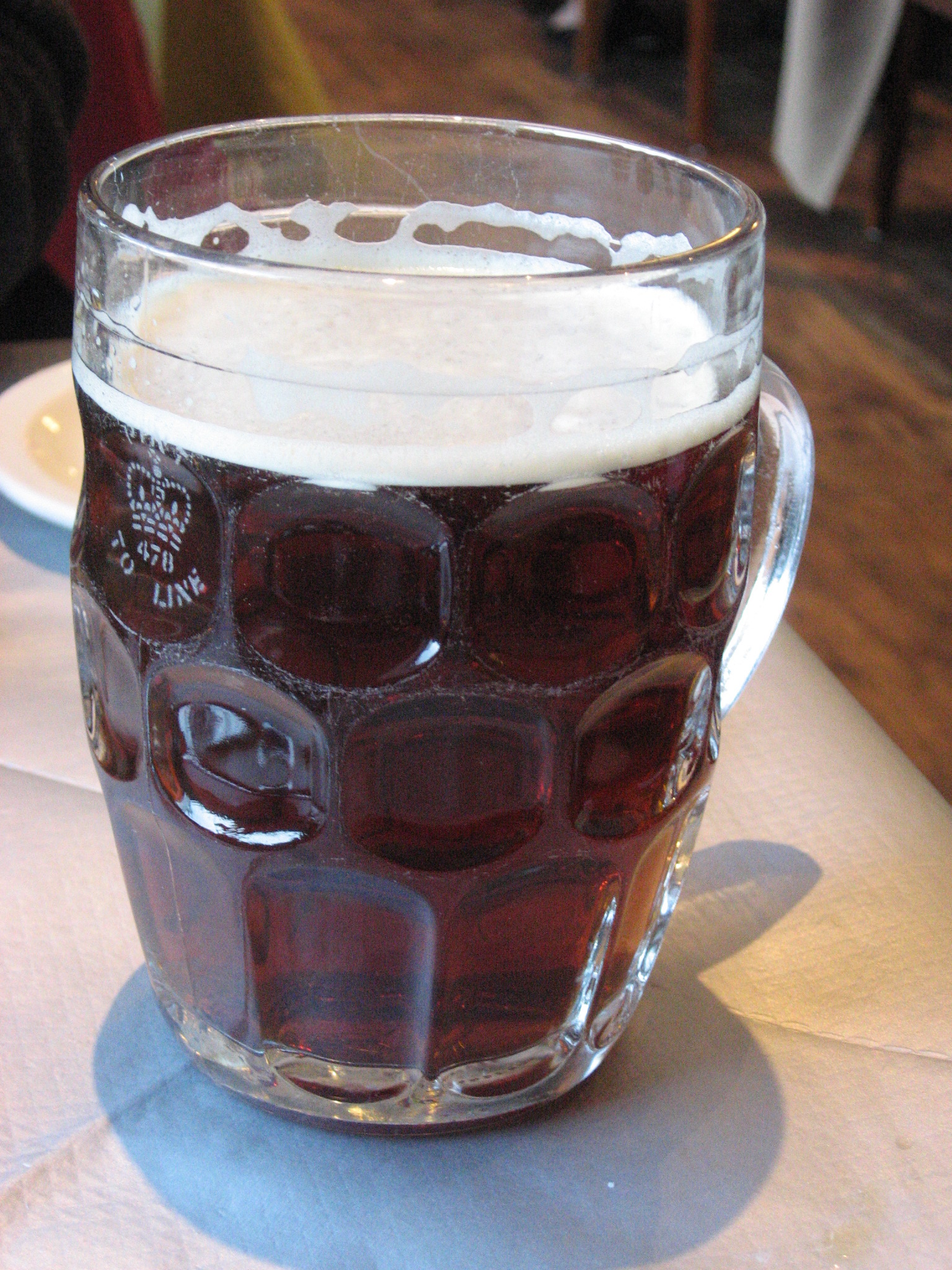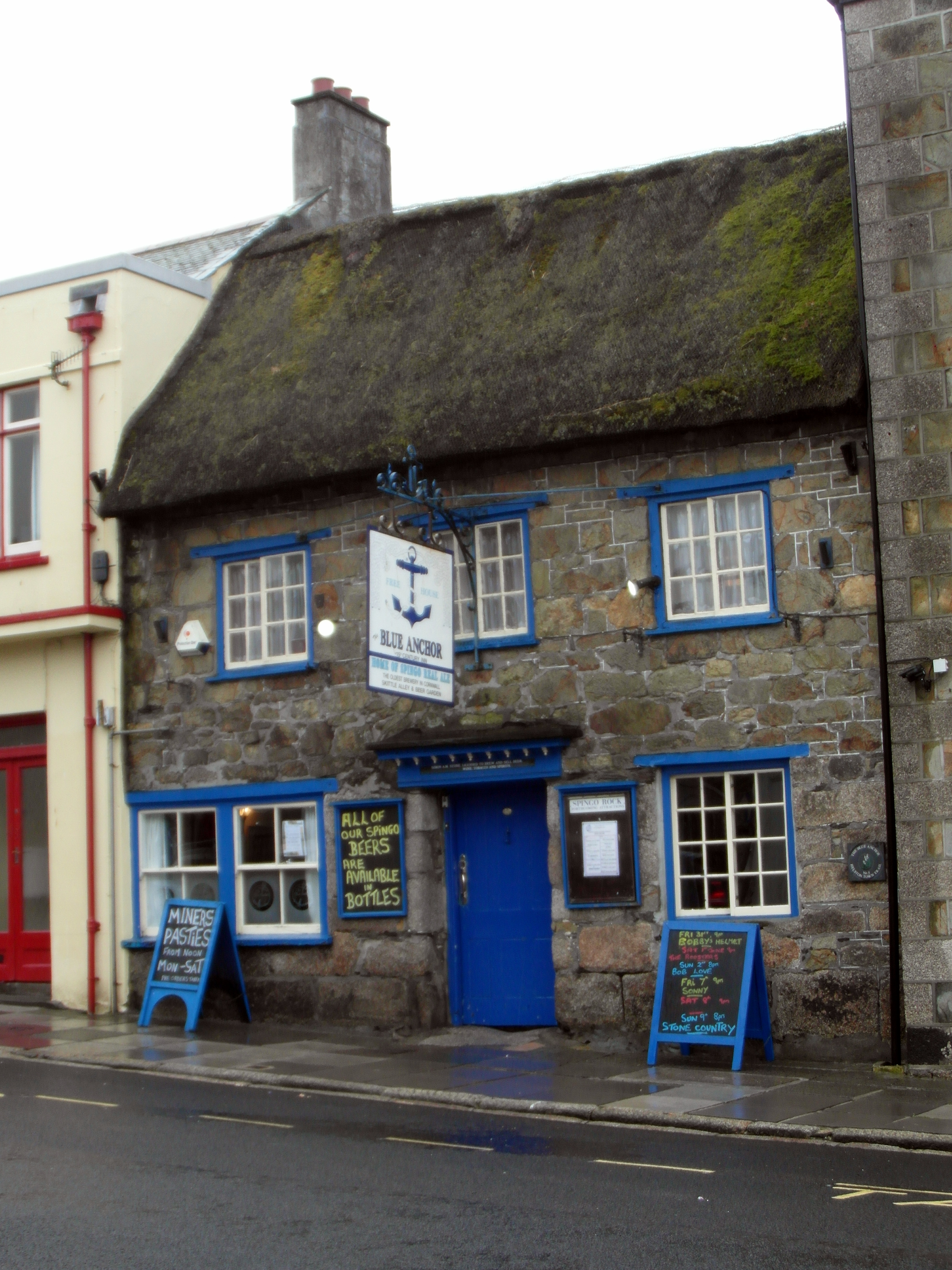|
Double Diamond Burton Pale Ale
Double Diamond Burton Pale Ale is an English pale ale, first brewed in 1876 by Samuel Allsopp & Sons. It was one of the highest selling beers in the United Kingdom in the 1950s, 1960s and 1970s. History Samuel Allsopp & Sons of Burton upon Trent first brewed Double Diamond in 1876 as an India Pale Ale. Allsopp merged with Ind Coope in 1935. Bottled Double Diamond began to be advertised heavily from 1946, becoming one of four nationally distributed beers by the 1950s. Under reciprocal trading agreements Ind Coope would agree to stock a rival brewer's beer if they replaced their supply of Bass or Worthington with Double Diamond. The keg version was launched in the 1960s. In the 1970s, it was advertised heavily by Ind Coope, especially on TV, with the tagline: "A Double Diamond works wonders". Carlsberg UK discontinued off-trade sales in 2003, although it continues as a keg beer. It has been alleged that small scale production of the bottled variant continued as it was Prince Phili ... [...More Info...] [...Related Items...] OR: [Wikipedia] [Google] [Baidu] |
Pale Ale
Pale ale is a golden to amber coloured beer style brewed with pale malt. The term first appeared around 1703 for beers made from malts dried with high-carbon coke, which resulted in a lighter colour than other beers popular at that time. Different brewing practices and hop quantities have resulted in a range of tastes and strengths within the pale ale family. History Coke had been first used for dry roasting malt in 1642, but it was not until around 1703 that the term ''pale ale'' was first applied to beers made from such malt. By 1784, advertisements appeared in the ''Calcutta Gazette'' for "light and excellent" pale ale. By 1830, the expressions ''bitter'' and ''pale ale'' were synonymous. Breweries tended to designate beers as "pale ales", though customers would commonly refer to the same beers as "bitters". It is thought that customers used the term ''bitter'' to differentiate these pale ales from other less noticeably hopped beers such as porters and milds. By the m ... [...More Info...] [...Related Items...] OR: [Wikipedia] [Google] [Baidu] |
Samuel Allsopp & Sons
Samuel Allsopp & Sons was one of the largest breweries operating in Burton upon Trent, England. History Origins Allsopp's origins go back to the 1740s, when Benjamin Wilson, an innkeeper-brewer of Burton, brewed beer for his own premises and sold some to other innkeepers. Over the next 60 years, Wilson and his son and successor, also called Benjamin, cautiously built up the business and became the town's leading brewer. In about 1800, Benjamin Junior took his nephew Samuel Allsopp into the business and then in 1807, following a downturn in trade because of the Napoleonic blockade, he sold his brewery to Allsopp for £7,000.'Burton-upon-Trent: Economic history', A History of the County of Stafford Volume 9: Burton-upon-Trent (2003), pp. 53–84. Date accessed: 2 May 2012 [...More Info...] [...Related Items...] OR: [Wikipedia] [Google] [Baidu] |
Burton Upon Trent
Burton upon Trent, also known as Burton-on-Trent or simply Burton, is a market town in the borough of East Staffordshire in the county of Staffordshire, England, close to the border with Derbyshire. In United Kingdom Census 2011, 2011, it had a population of 72,299. The demonym for residents of the town is ''Burtonian''. Burton is located south-west of Derby, north-west of Leicester, west-south-west of Nottingham and south of the southern entrance to the Peak District National Park. Burton is Brewers of Burton, known for its brewing. The town grew up around Burton Abbey. Burton Bridge was also the site of two battles, in Battle of Burton Bridge (1322), 1322, when Edward II of England, Edward II defeated the rebel Thomas, Earl of Lancaster, Earl of Lancaster and in Battle of Burton Bridge (1643), 1643 when royalists captured the town during the First English Civil War. William Paget, 1st Baron Paget, William Lord Paget and his descendants were responsible for extending the m ... [...More Info...] [...Related Items...] OR: [Wikipedia] [Google] [Baidu] |
Ind Coope
Allied Breweries was the result of a 1961 merger between Ind Coope (of Burton), Ansells (of Birmingham), and Tetley Walker (of Leeds). In 1978, Allied Breweries merged with the food and catering group J. Lyons and Co to form Allied Lyons. The breweries business merged with Carlsberg in 1992 and became Carlsberg-Tetley, which is now part of Carlsberg Group, with Carlsberg-Tetley now known as Carlsberg UK. History Ind Coope Edward Ind acquired the Star Brewery in Romford, Essex from George Cardon in 1799. Ind entered into partnership with Octavius Coope and George Coope in 1845 to form Ind Coope. A brewery was established in Burton-on-Trent in 1856. Ind Coope merged with Samuel Allsopp & Sons in 1934. Ind Coope acquired Benskins Watford Brewery in 1957 and Taylor Walker and Friary Meux in 1959. Allied Breweries Ind Coope merged with Tetley Walker of Leeds and Ansells to form Allied Breweries in 1961. In 1968, Allied made an agreed £108M bid for Showerings of Shepton Malle ... [...More Info...] [...Related Items...] OR: [Wikipedia] [Google] [Baidu] |
Prince Philip
Prince Philip, Duke of Edinburgh (born Prince Philip of Greece and Denmark, later Philip Mountbatten; 10 June 1921 – 9 April 2021) was the husband of Queen Elizabeth II. As such, he served as the consort of the British monarch from Elizabeth's accession as queen on 6 February 1952 until his death in 2021, making him the longest-serving royal consort in history. Philip was born in Greece, into the Greek and Danish royal families; his family was exiled from the country when he was eighteen months old. After being educated in France, Germany, and the United Kingdom, he joined the Royal Navy in 1939, when he was 18 years old. In July 1939, he began corresponding with the 13-year-old Princess Elizabeth, the elder daughter and heir presumptive of King George VI. Philip had first met her in 1934. During the Second World War, he served with distinction in the British Mediterranean and Pacific fleets. In the summer of 1946, the King granted Philip permission to marry ... [...More Info...] [...Related Items...] OR: [Wikipedia] [Google] [Baidu] |
Paul Burrell
Paul Burrell (born 6 June 1958) is a former servant of the British Royal Household and latterly butler to Princess Diana. Background and Royal Household career Burrell was born and raised in Grassmoor, Derbyshire, a coal-mining village. His parents were Graham Burrell and Beryl Burrell, née Kirk. His father was a lorry driver and it was initially assumed he would go to work in the local colliery, but he had decided at the age of eight that he wanted to work at Buckingham Palace. This was after a trip to London, in which he witnessed the Changing of the Guard. He attended William Rhodes Secondary School in Chesterfield before entering High Peak College in Buxton, where he studied hotel management. Burrell entered Royal Service at age 18 as a Buckingham Palace footman, becoming the Queen's personal footman a year later. He was nicknamed "Small Paul", to distinguish him from a taller footman, Paul Whybrew, who was known as "Tall Paul". In 1987, Burrell joined the household o ... [...More Info...] [...Related Items...] OR: [Wikipedia] [Google] [Baidu] |
Cask Conditioned
Real ale is the name coined by the Campaign for Real Ale (CAMRA) for beer that is "brewed from traditional ingredients, matured by secondary fermentation in the container from which it is dispensed, and served without the use of extraneous carbon dioxide". Cask and bottle-conditioned beers Cask and bottle-conditioned beers are referred to as real ale by CAMRA, as both fit its description of beers served from a container in which they have undergone secondary fermentation. Filtered beer The fundamental distinction between real and other ales is that the former are not filtered and the yeast is still present and living in the container from which the real ale is served, although it will have settled to the bottom and is usually not poured into the glass. The natural carbon dioxide is lost during filtration so filtered beer has to be artificially re-carbonated. This can make the beer very 'gassy'. Because the yeast is still present and alive in real ale, a slow process of second ... [...More Info...] [...Related Items...] OR: [Wikipedia] [Google] [Baidu] |
Beer In England
Beer has been brewed in England for thousands of years. As a beer brewing country, it is known for top fermented cask beer (also called real ale) which finishes maturing in the cellar of the pub rather than at the brewery and is served with only natural carbonation. English beer styles include bitter, mild, brown ale and old ale. Stout, porter and India pale ale were also originally brewed in London. Lager-style beer has increased considerably in popularity since the mid-20th century. Other modern developments include consolidation of large brewers into multinational corporations; growth of beer consumerism; expansion of microbreweries and increased interest in bottle conditioned beers. History Romano-Celtic Britain Brewing in what is now England was probably well established when the Romans arrived in 54 BC, and certainly continued under them. In the 1980s, archaeologists found the evidence that Rome's soldiers in Britain sustained themselves on Celtic ale. A series of ... [...More Info...] [...Related Items...] OR: [Wikipedia] [Google] [Baidu] |




